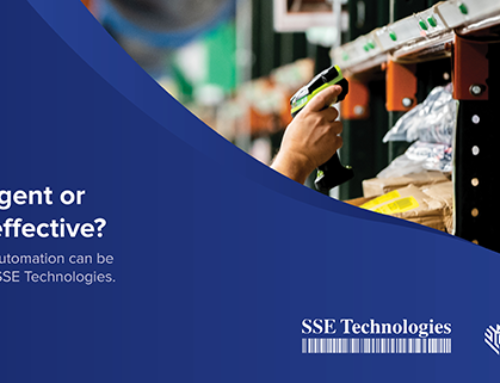The past few years have successfully demonstrated that proactive preparation can save entire supply chains from disaster in the event of sudden change. Between new demands for contactless shopping, transparent worker safety verification, and faster order fulfillment, supply chains faced pressures on every side to provide fast and affordable service. In the end, researchers and surveys have highlighted the following shared struggles across warehouses nationwide:
- Difficulty in retaining a skilled labor force – Nearly a fifth of warehouses admitted to struggling extremely in hiring and keeping workers, thus explaining the high labor turnover rates plaguing warehouses. Constant labor turnover increases costs since workers must be trained and may not perform as quickly as seasoned team members. Furthermore, nationwide shortages further complicate retention since workers must now work harder to keep up with customer expectations, thus adding to worker stress that feeds the turnover cycle.
How it’s being solved: There has yet to be discovered a perfect solution to preventing turnover, yet more warehouses are turning to digitization to simplify onboarding and everyday crucial tasks. Around 57% of businesses are using virtual experiences and voice-based solutions to facilitate onboarding since these technologies build upon natural experiences for easier adoption.
- Forecasting demands in inventory – Sudden demands in specific products can lead to fake stockouts if consumers aren’t readily notified of replenishment. 48% of warehouses struggled with forecasting spikes in demand, leading customers to turn to competitors to finalize their purchases.
How it’s being solved: Unlike manual data collection, automated scanning and mobile computing can aggregate data onto a centralized database to be used later to pinpoint surges in demand over time.
- Offering lower prices within faster delivery timeframes – Thanks to SKU proliferation, several brands may offer the same product under different names, which means businesses now rely on other factors such as cost and delivery timeframes to support customer loyalty. Unfortunately, last mile expenses still account for over half of shipping costs, which means businesses seeking to accelerate fulfillment must deal with increasing last mile costs that can harm the bottom line. Studies show that unless last mile expenses are optimized over time, business profits can decline by 26% in a span of 3 years.
How it’s being solved: Last mile costs are only expected to rise with fluctuating gas prices and labor turnover rates. Therefore, to lower product costs, warehouses now focus on consolidating and automating repetitive tasks with mobile computers and autonomous mobile robots (AMRs). Studies predict that within the next two years, around 68% of warehouses will adopt robotics and automation to reduce operational costs, freeing up businesses to offer faster service despite last mile costs.
- Providing real-time visibility – Whether it’s for customers expecting to track orders in real-time or suppliers seeking to verify shipments were completed, real-time visibility is key to thriving in today’s now-economy. In addition to boosting inventory control, real-time communication and tracking could empower warehouses to notify teams of sudden disruptions; however, technology implementation for advanced systems can be complex, halting productivity with long addition rates and piloting.
How it’s being solved: Coming from a long line of trial and error, today’s real-time locationing systems can be tailored to adjust and grow alongside fluctuating operations. For example, Zebra’s Intelligent Edge solutions like MotionWorks and VisibilityIQ empower workers to track in-motion inventory and asset performance all through their handheld devices, securing greater stock availability and device uptime for smoother workflows.
A warehouse’s maturity level can impact how operations adapt to challenges. Learn more about how to enhance your warehouse’s maturity, click here.
Change is inevitable. Proper preparation can safeguard operations from sudden downtime, stockouts, missed compliances, and backorders. To learn more about how warehouses are navigating current supply chain challenges, contact SSE Technologies’ automation specialists and see which systems are best suited to match your workflows.






